Los Engrillados of Atlixco: Mexican men in shackles with cacti stuck in their skin walk in pain to wash away their sins

If I had to explain the meaning of the word "penance" to someone, I would bring in the so-called Engrillados of Atlixco, Mexico. The faithful who have chosen to wash away their sins through the path of suffering at Easter.
Engrillados of Atlixco - Easter tradition in Mexico
It's Good Friday, high noon, and a crowd of curious onlookers huddles outside the church of St. Francis in Atlixco. The early 16th-century church sits on a hill above the town, and it takes a lot of strength just to climb up to it in the March midday heat. It's now causing sweat to pour from all those watching, trying to snatch even an inch of shade for themselves.
But this is a poor distillation of what dozens of local worshippers will taste in a few minutes. For, as they do every year, the engrillados set out on a journey of penance in this town about 150 kilometers southeast of Ciudad de México. In English, it probably translates as " the shackled".
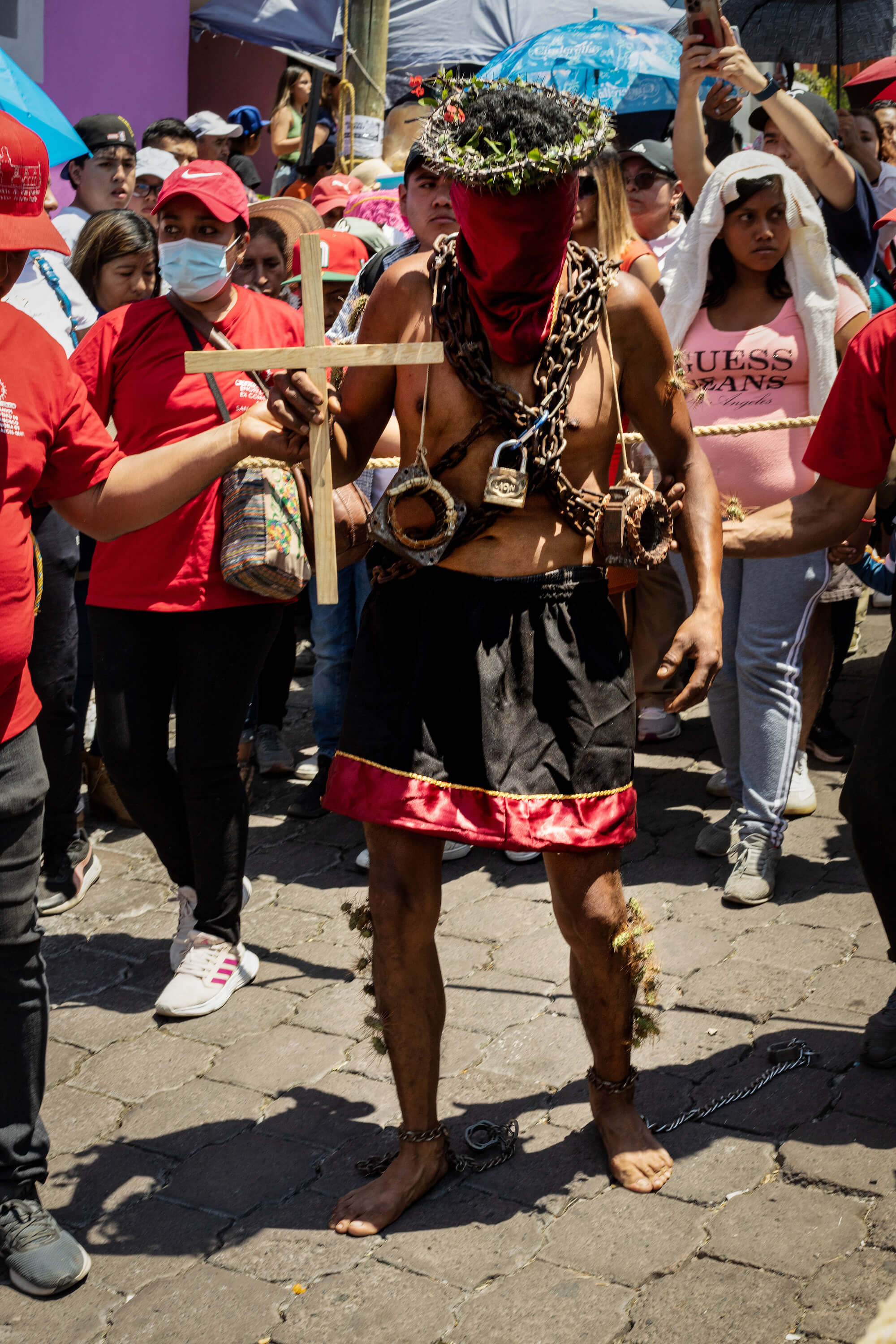
As you have probably already noticed from the photos, this is because these volunteers are carrying around 20 kilos of iron. Most often in the form of chains strapped across the hull, sometimes accompanied by giant screws, hooks, or horseshoes. Other heavy chains are dragged behind them, attached to their ankles.
At the beginning of the Easter tradition was a stolen finger
And what's the point of all this parade? This tradition has a history of about a century in Atlixco, and its first practitioner was a certain José Muñoz. It's quite a dark story.
Legend has it that José Muñoz fell in unrequited love. He decided that for the heart of his chosen one, he would sacrifice himself to black magic. A local witch advised him to go to the cemetery and make an amulet out of the corpse's ring finger.
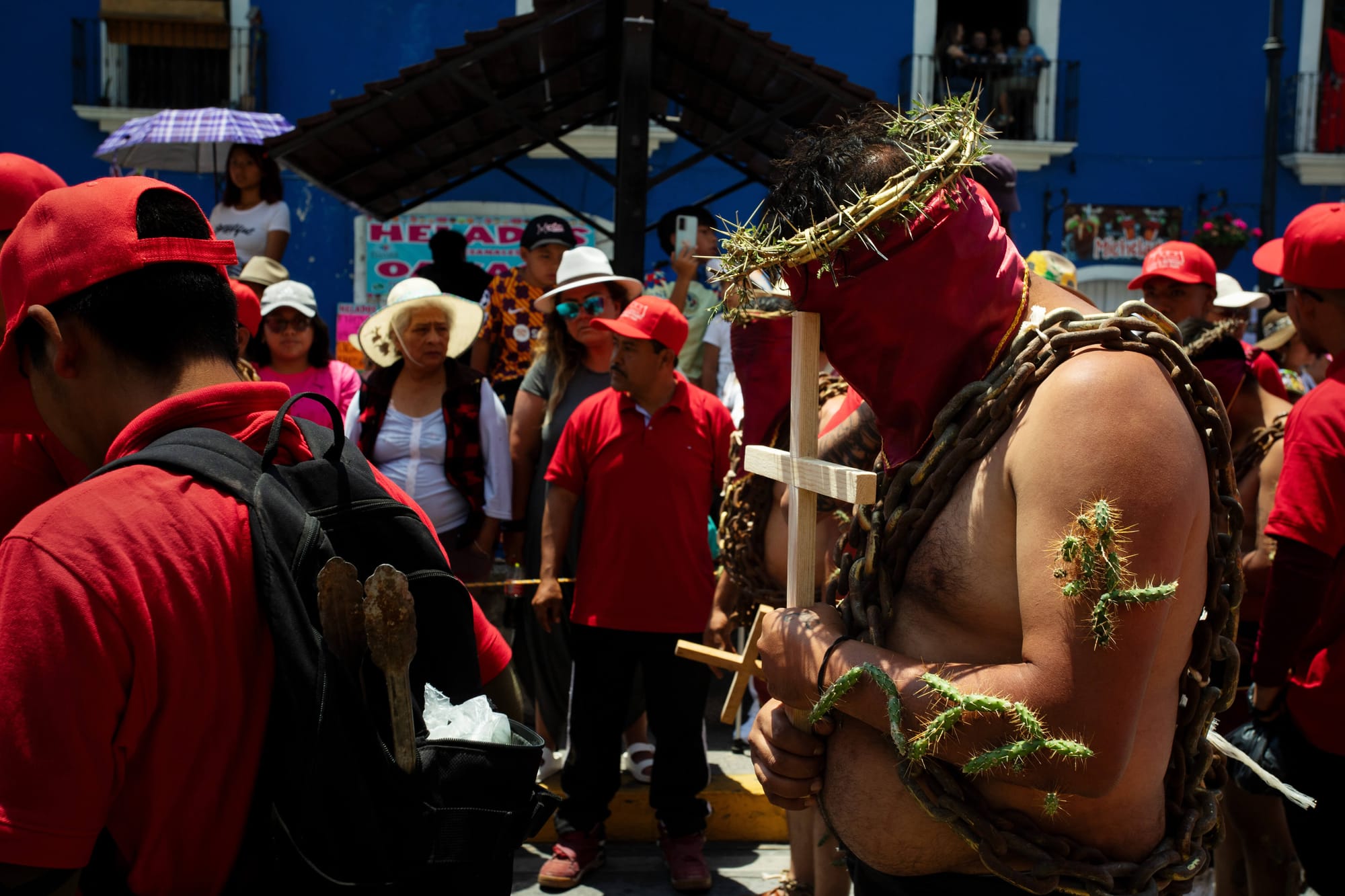
And so he did. Instead of his beloved, however, it gave him nightmares. According to witnesses, he ran around town at night like a maniac, haunted by the ghost of the finger's owner. The man of stocky build was so desperate that he vowed to walk around the city on Good Friday for the next 50 years wearing heavy chains just to wash away his sin. As he did so each year, he was joined by other residents who wanted to cleanse themselves before God.
The custom has survived to this day. Every year on Good Friday, dozens of engrillados set out on a roughly three-kilometer journey through the city. They are not necessarily just sinners like the aforementioned José Muñoz, but some want to thank the heavens for their kindness, ask them for something, or just express the strength of their faith.
Crown of thorns and cactus spines in the skin
From early in the morning, they meet at St. Francis Church, where they get dressed. In addition to shackles, they have cactus spines stuck in their skin and a scarf over their face. This is so that the neighbors won't recognize them, the locals told me. According to the more noble version, it's for anonymity and therefore humility before God.
They put a crown of thorns on their heads and entrust themselves to the care of guides who support them along the way and point the way. Supposedly, the engrillados have been preparing intensively for this journey of their lives for three months, both physically and mentally. I came across a quote somewhere that the pain of this harrowing journey lasts for a few days, whereas the satisfaction that follows is for the rest of their lives.
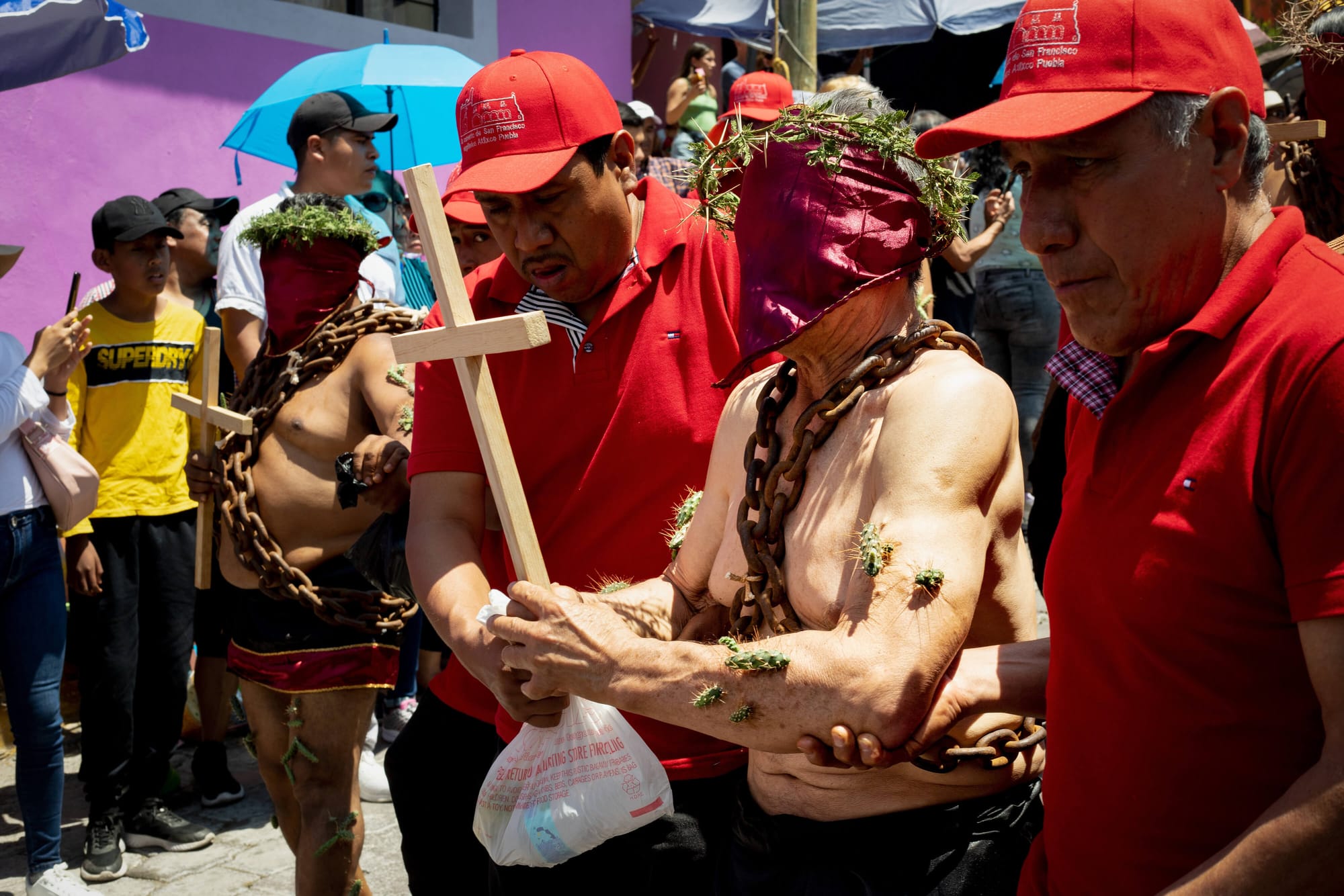
When the drums crashed over Atlixco that Friday noon and the rattling of chains rang through the stone streets, it was a breathless moment. All eyes were on the dozens of sufferers, and one couldn't help wondering what could have driven any of them to undergo such a thing. At the head of the procession walked a man of advanced age, with sagging muscles and unsteady steps, and you involuntarily wondered what had induced him to go through this harrowing spectacle before the whole town and strangers. Then there was a gigantic man, who, though deprived of his sight and mobility, was terrifying. One man had thorns stuck in a tattoo of St. Guadalupe, the patron saint of Mexico, and another had the cacti stuck in a tattoo of an unknown female gunman on his bicep.
The procession descended from the church towards the main square and then turned west into the Guadalupe neighborhood. Each time after a few steps it stopped to pray. From the beginning it was evident in the "shackled" how immense the fatigue was wearing them down, their guides increasingly becoming assistants, who arranged the chains that imprinted deeper into their skin with each step.
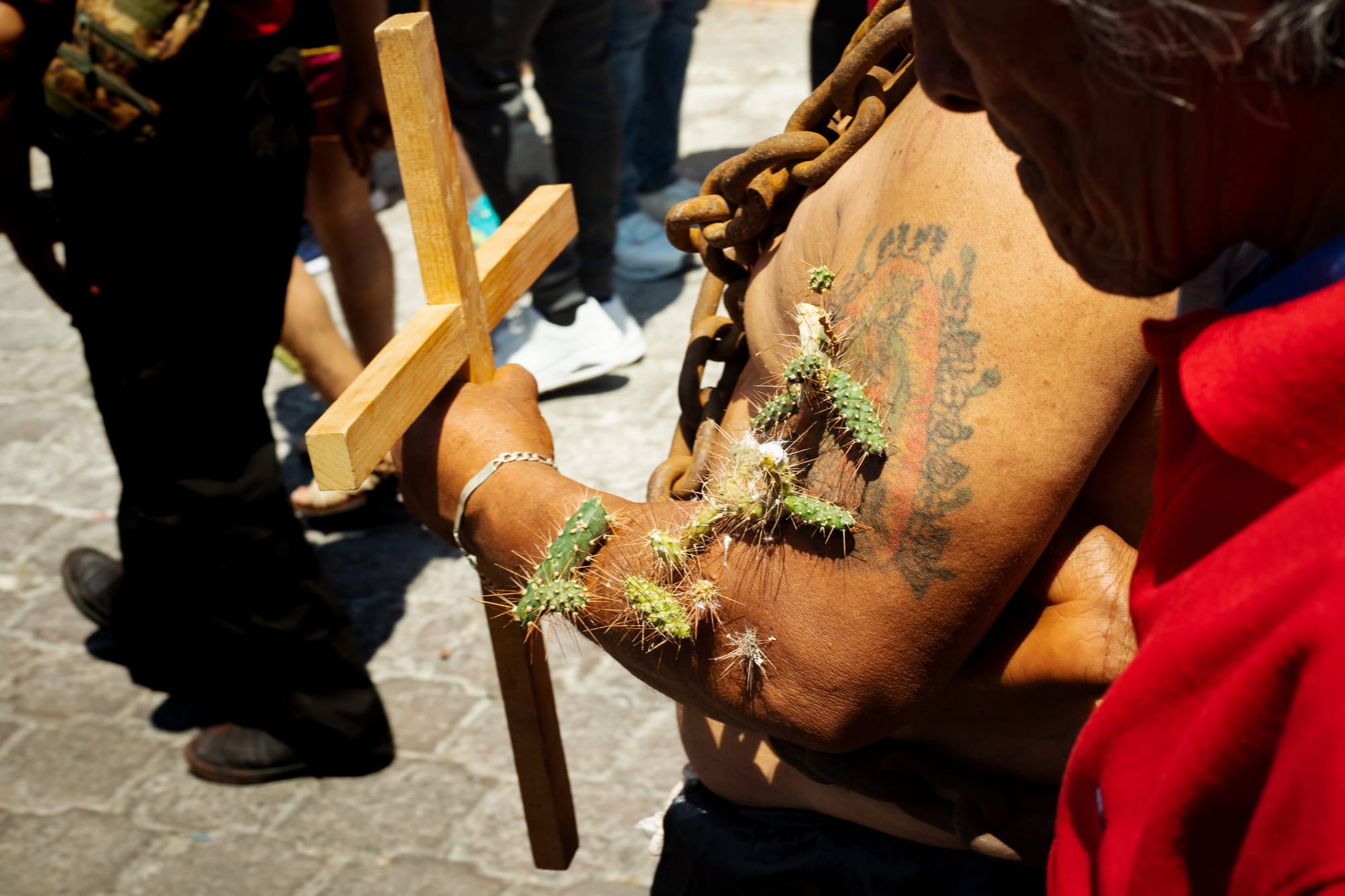
Chained to the Makario's bar
I had enough myself after the fourth stop. The afternoon heat was unbearable. I had been walking through the hot city since early morning, taking pictures of residents decorating the streets with colorful mosaics of colored sawdust. Even then, I was drawn to an adjacent bar called Makario. From the looks of it, a poor bar, complete with a sign on the facade that read "Donde todo se puede" - Where everything is alllowed.
I knew I was going to end up there sooner or later that day.
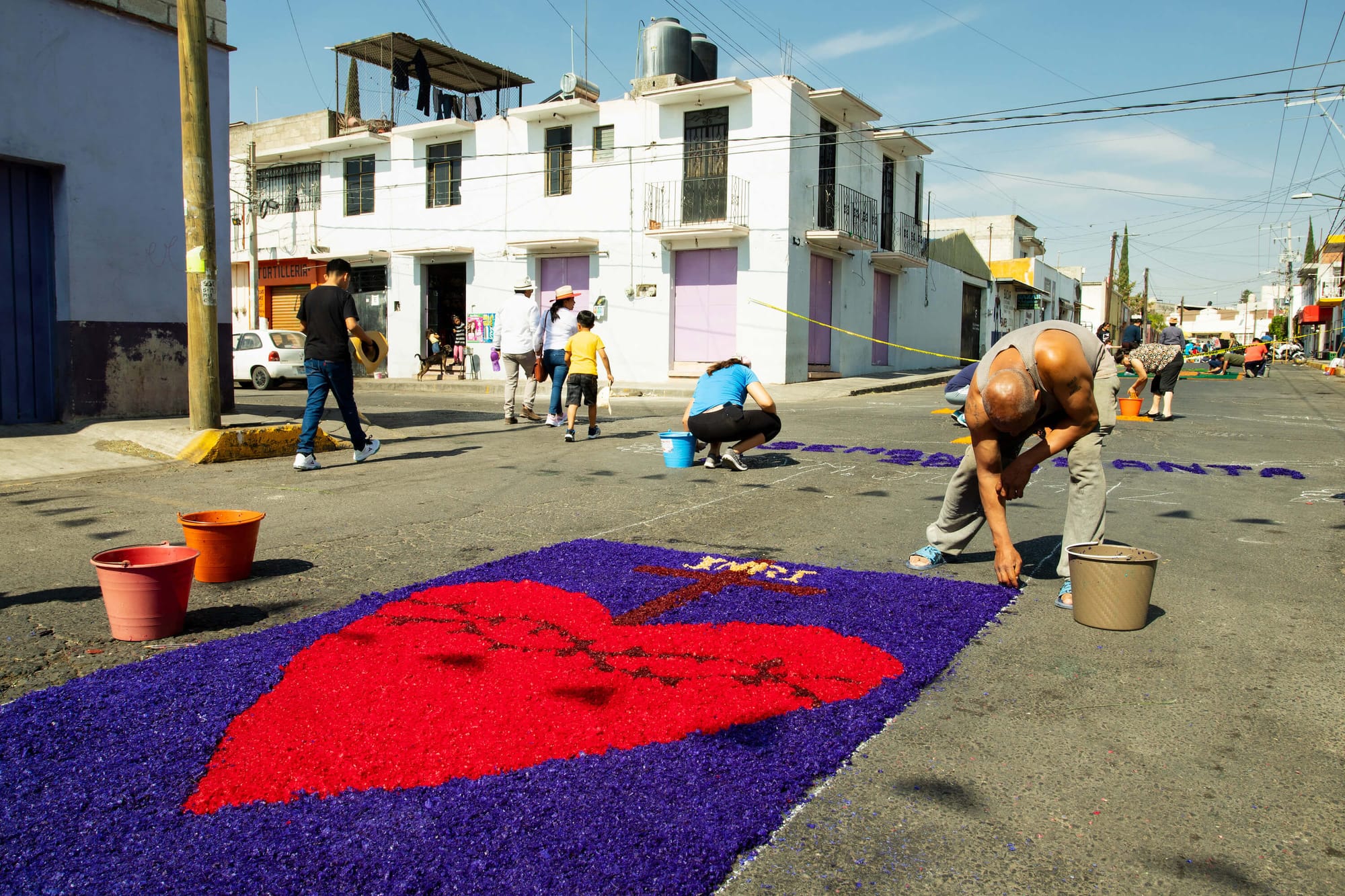
Now, as the procession of suffering sinners passed by, I left them in the distance ahead of me and raised my eyes from the ground to the entrance of this cathedral of booz and wild stories. The barman stood there and winked at me mischievously. I accepted this as a sign from Above and approached. The beer, costing 25 pesos, just hissed inside me. The bartender let me choose the music and brought me a bite to eat as the drums and the clanking of the engrillados chains faded away. "I'll catch them again at the finish line when they are more tired," I promised myself and ordered one more Victoria beer. "I'm not such a sinner as to have to go all the way with them."
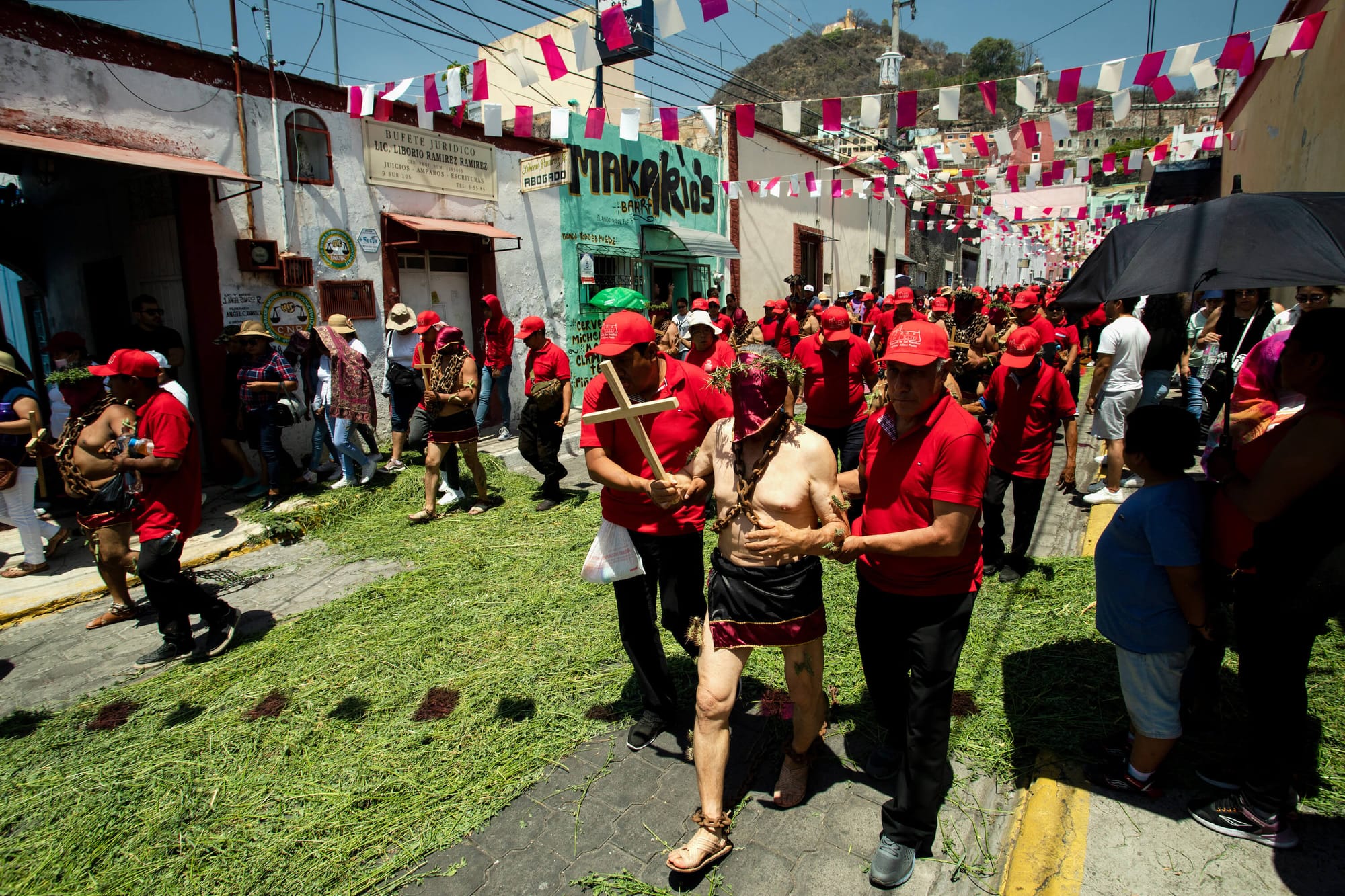
I finished my third beer and hit the streets. I couldn't find the engrillados anymore. That's just to explain why I can't tell you if they all made it to the end safe. But let us trust that all who made such a sacrifice for their purity found their goal in the end. As I did at Makario's Bar.
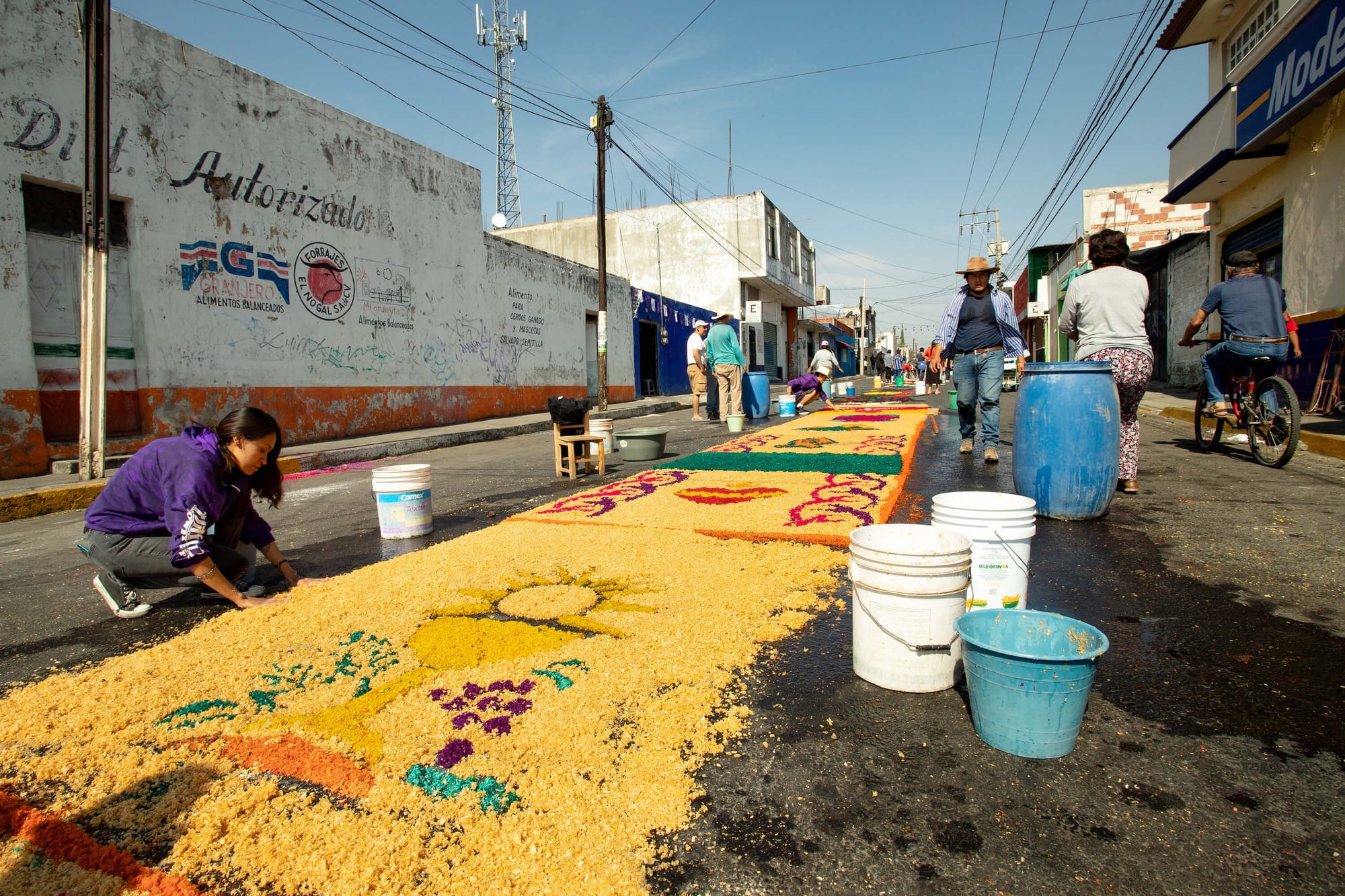
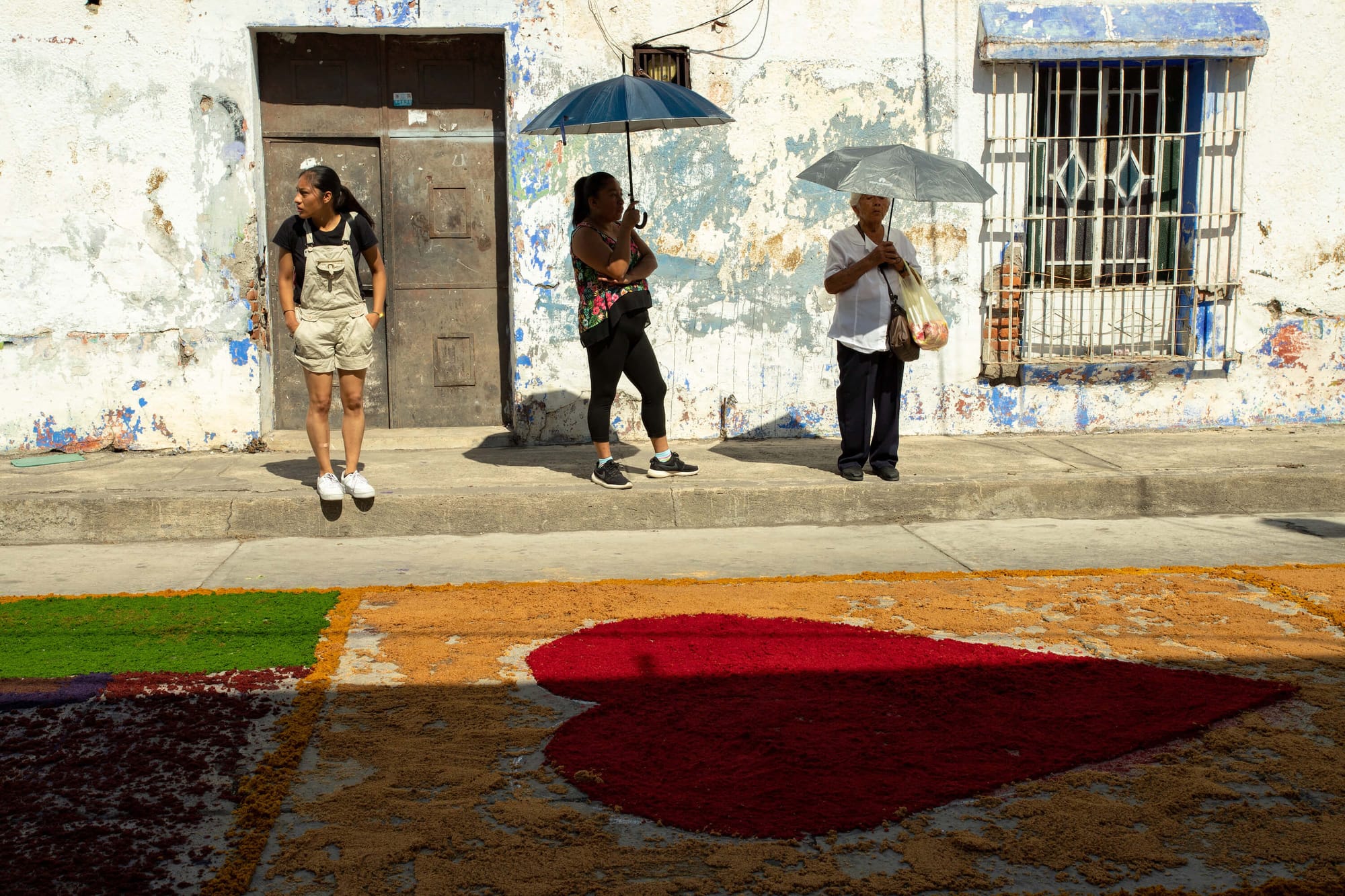
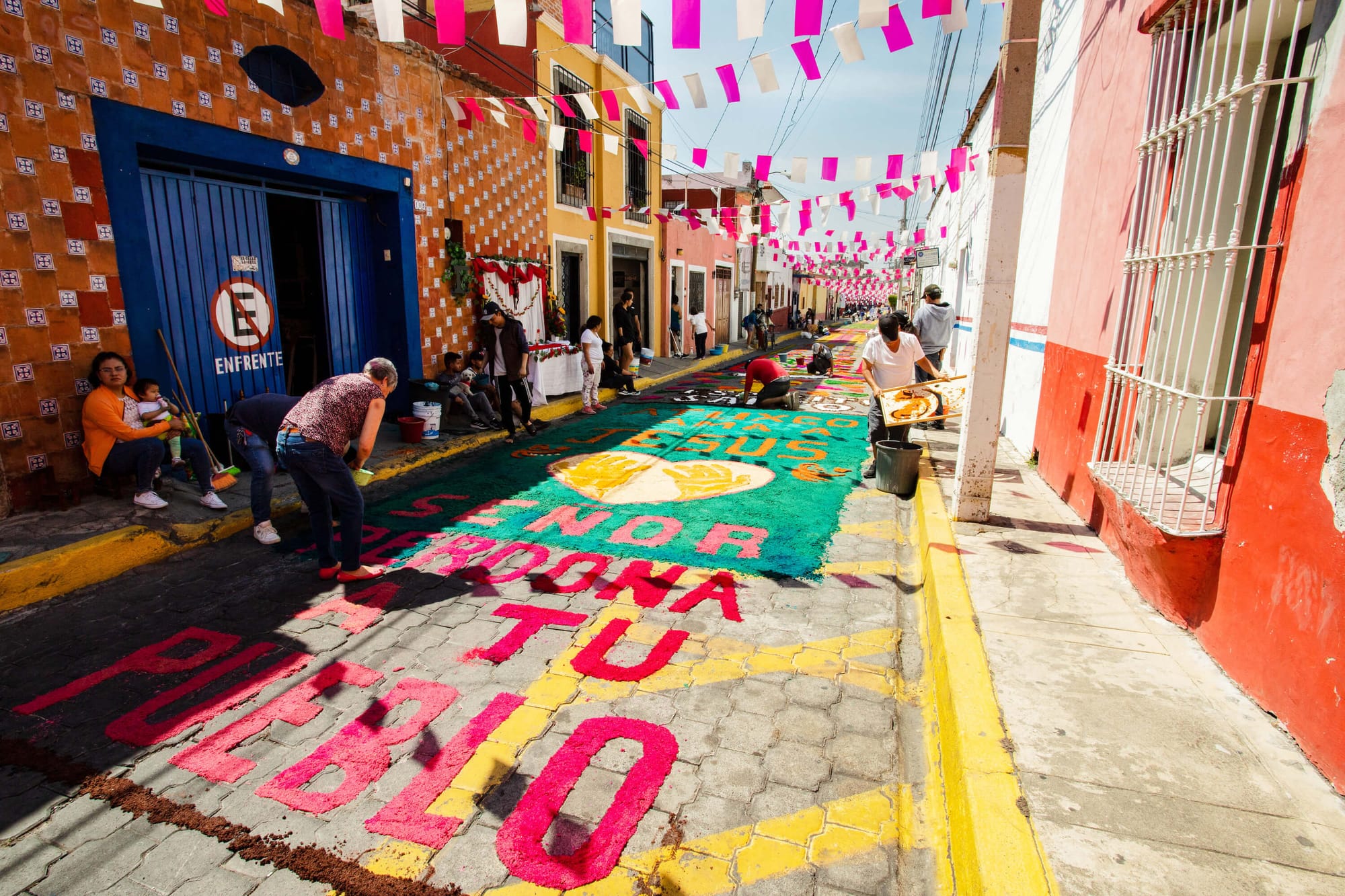
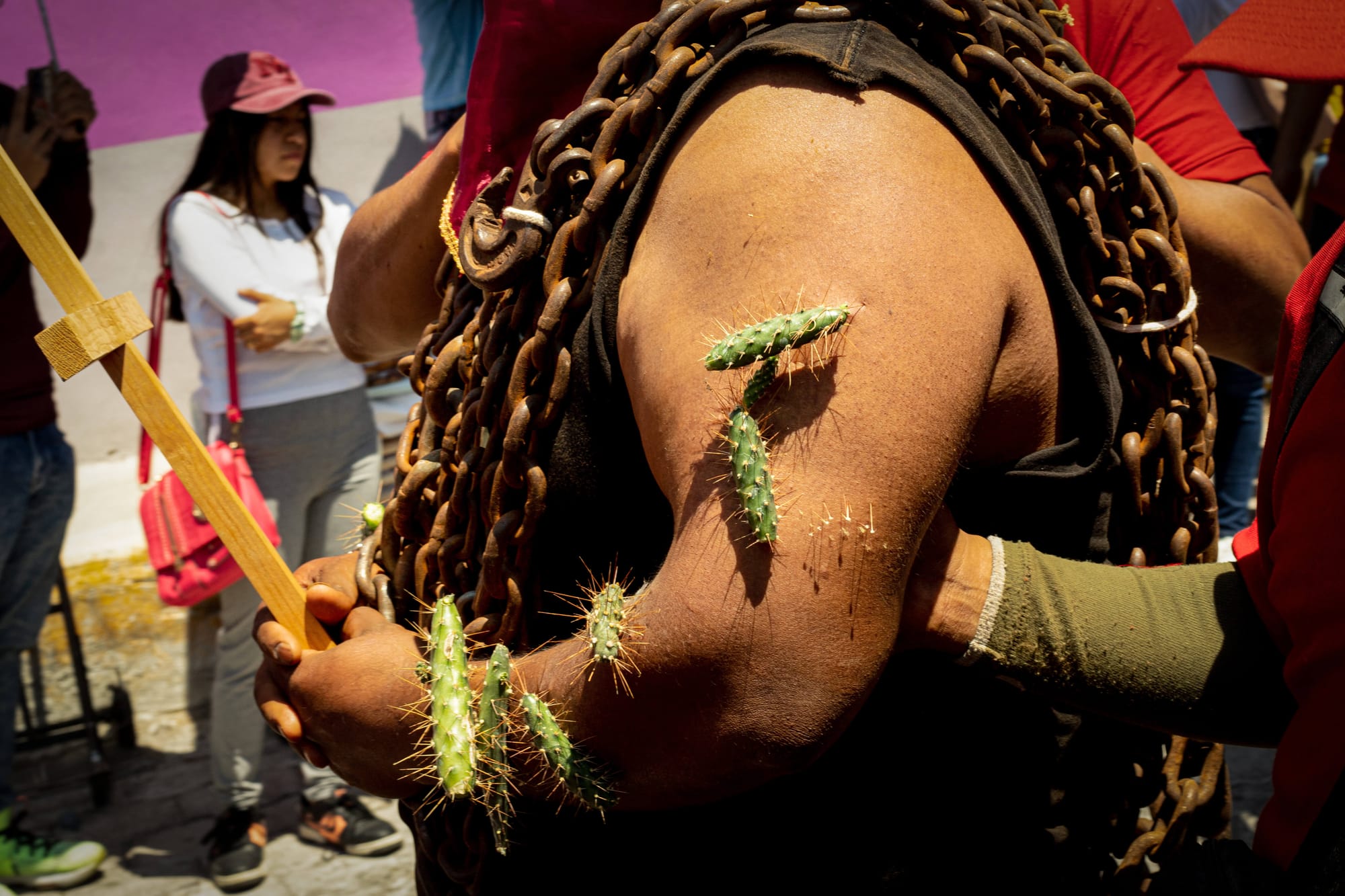
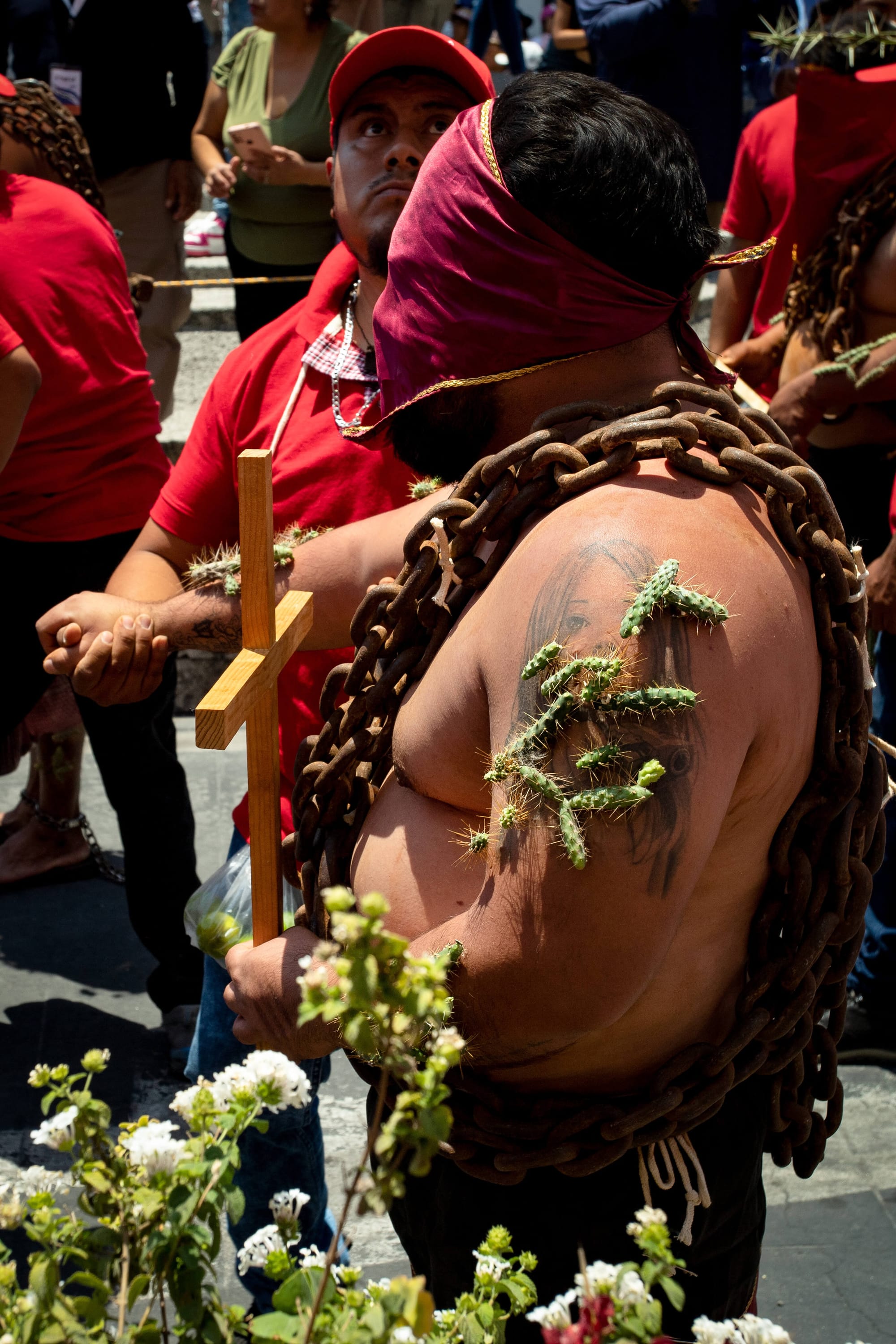
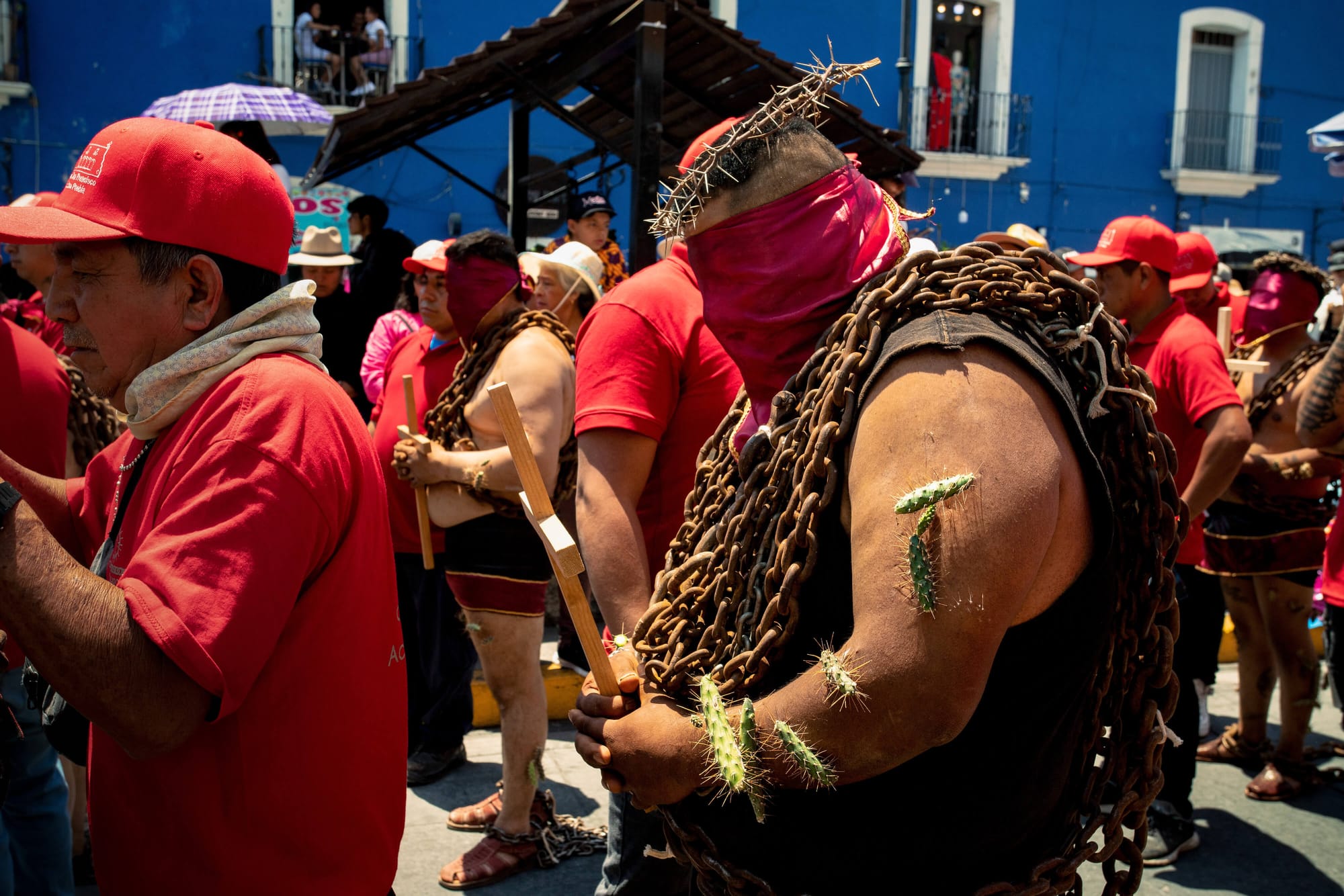
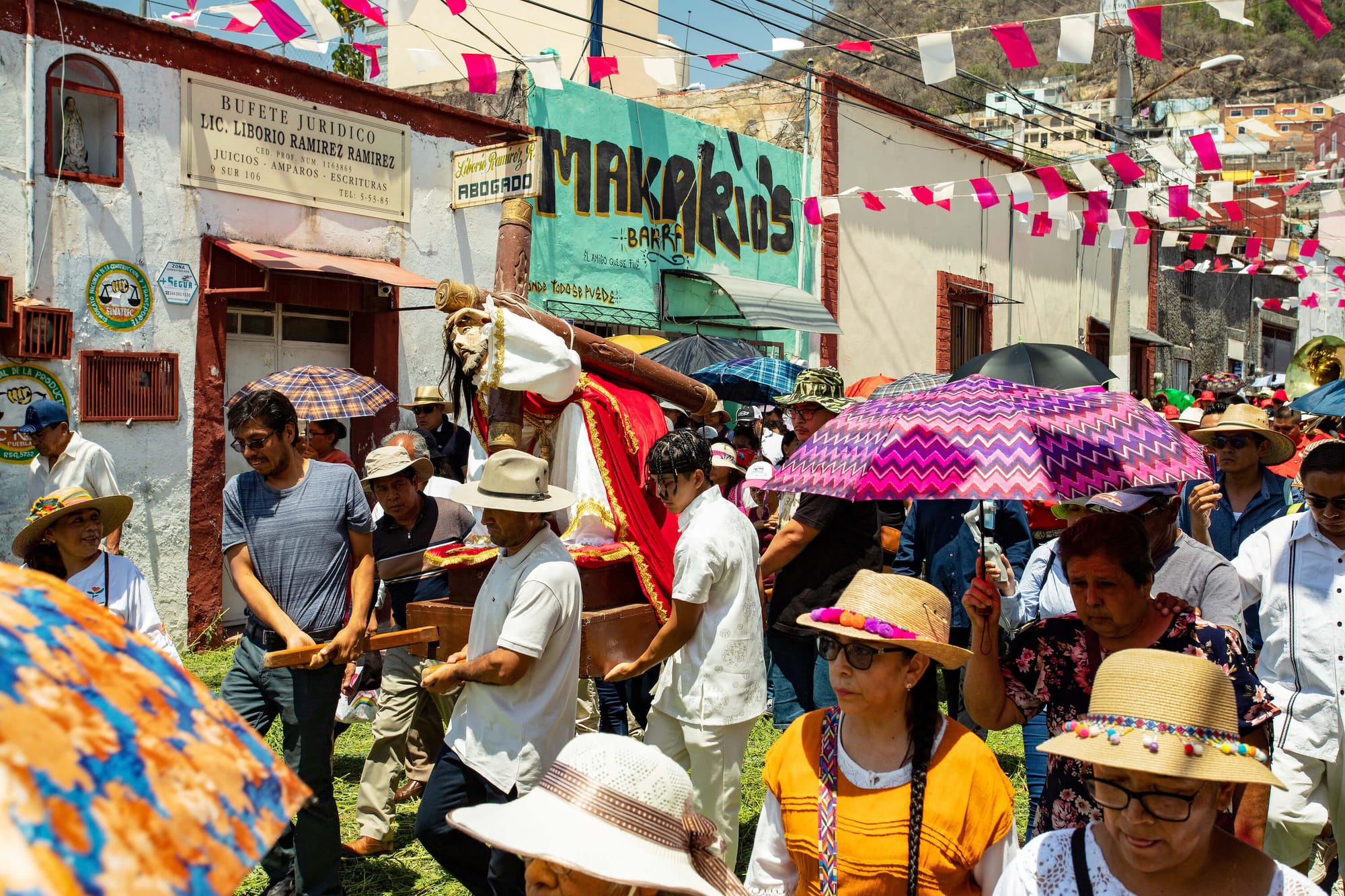
Los Engrillados of Atlixco

